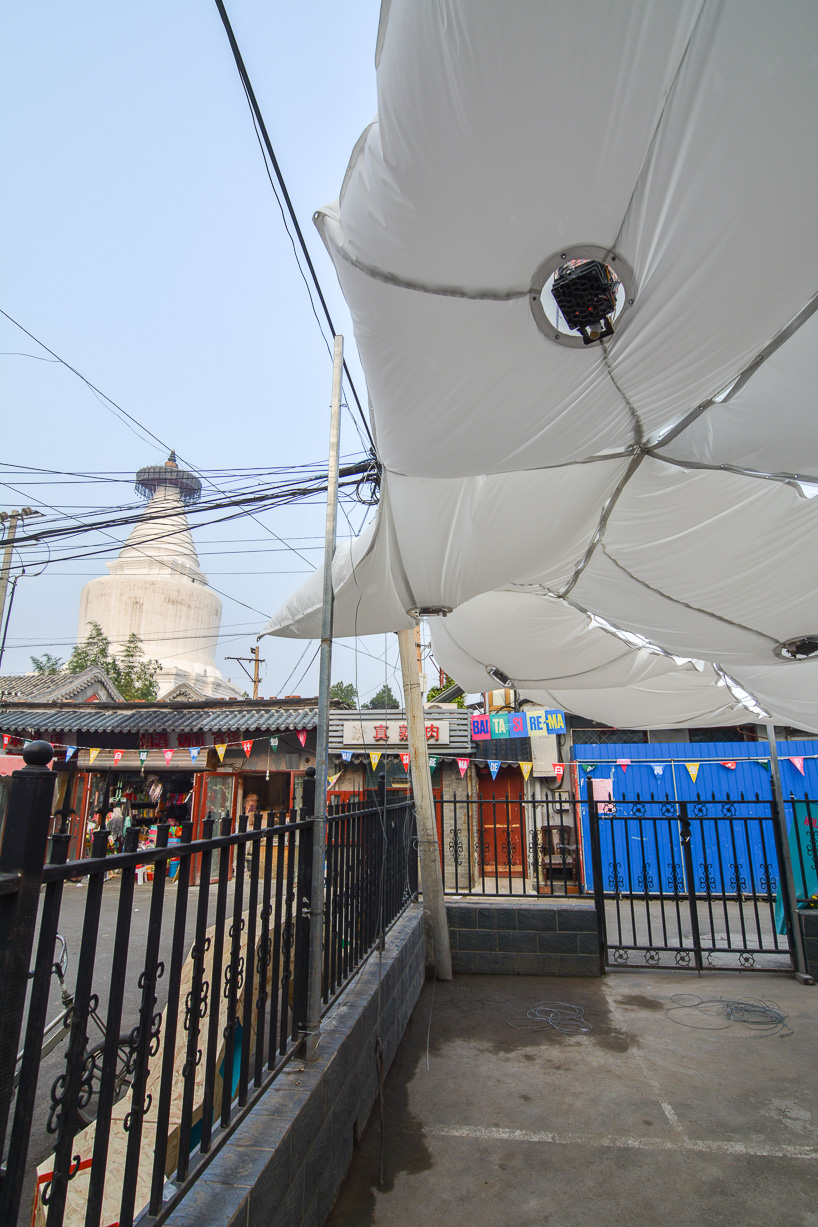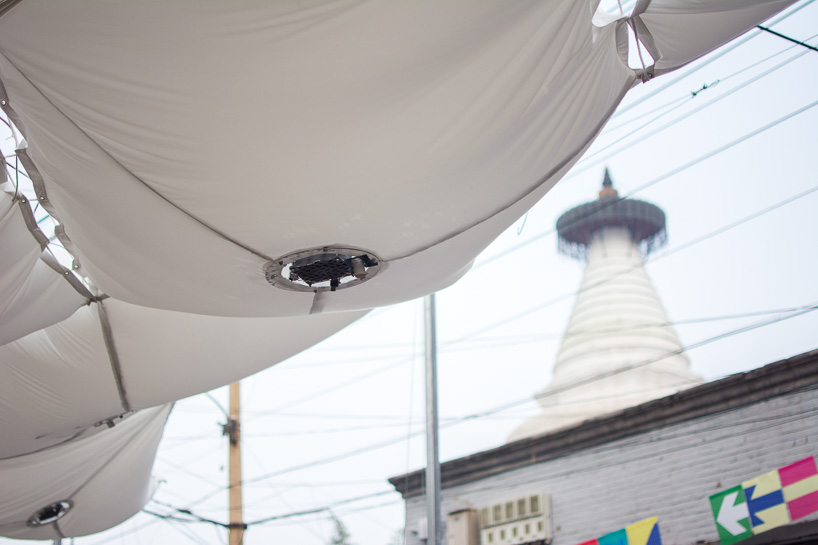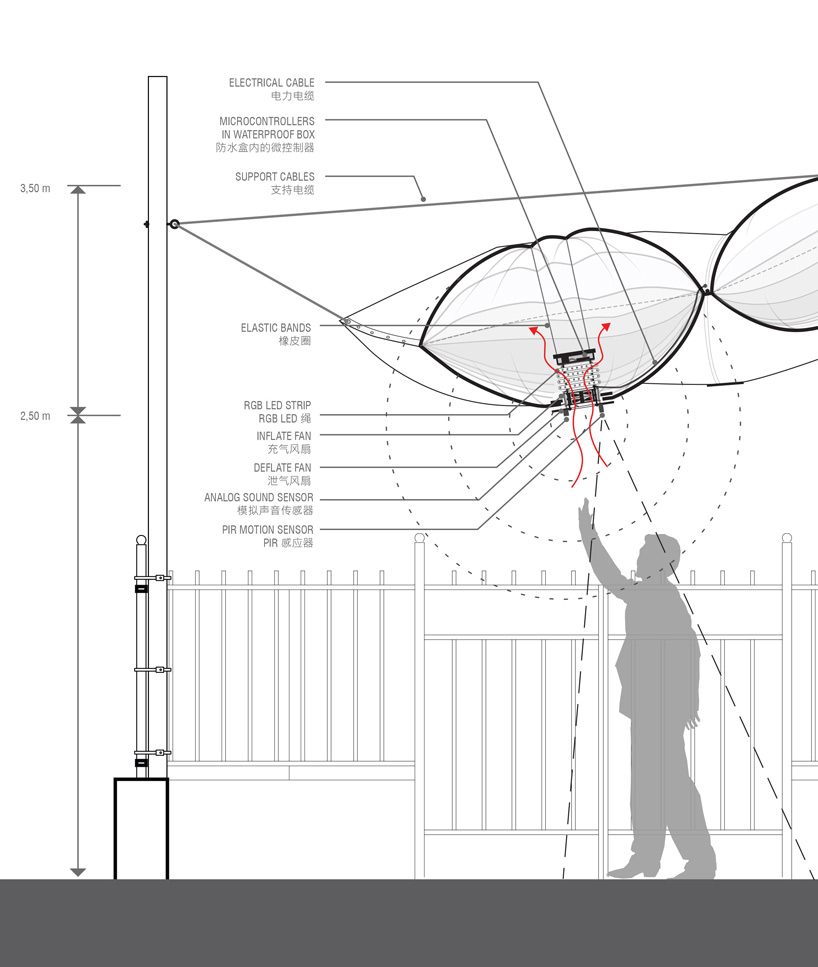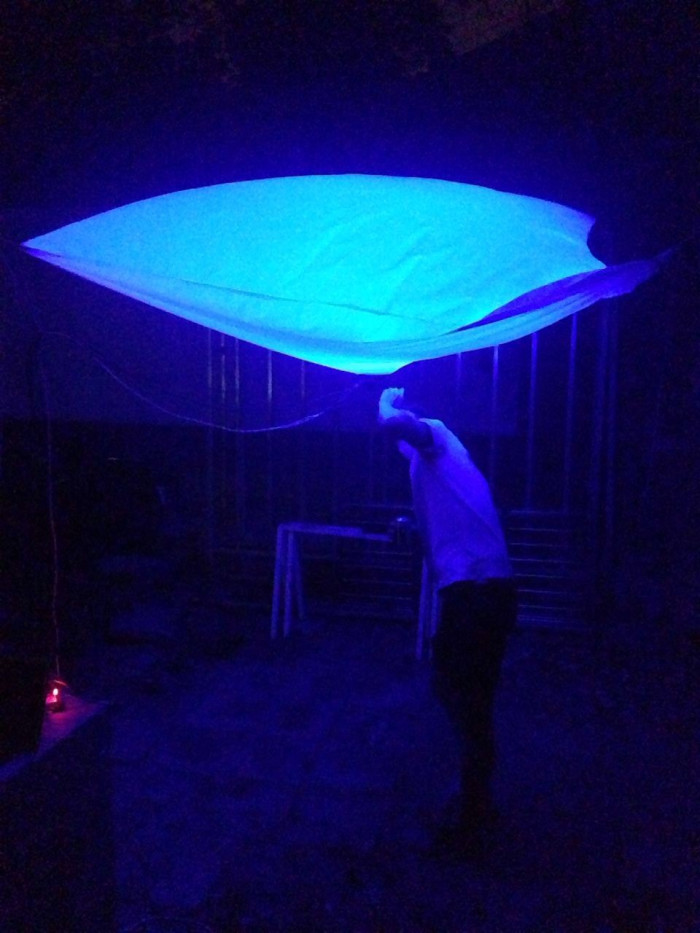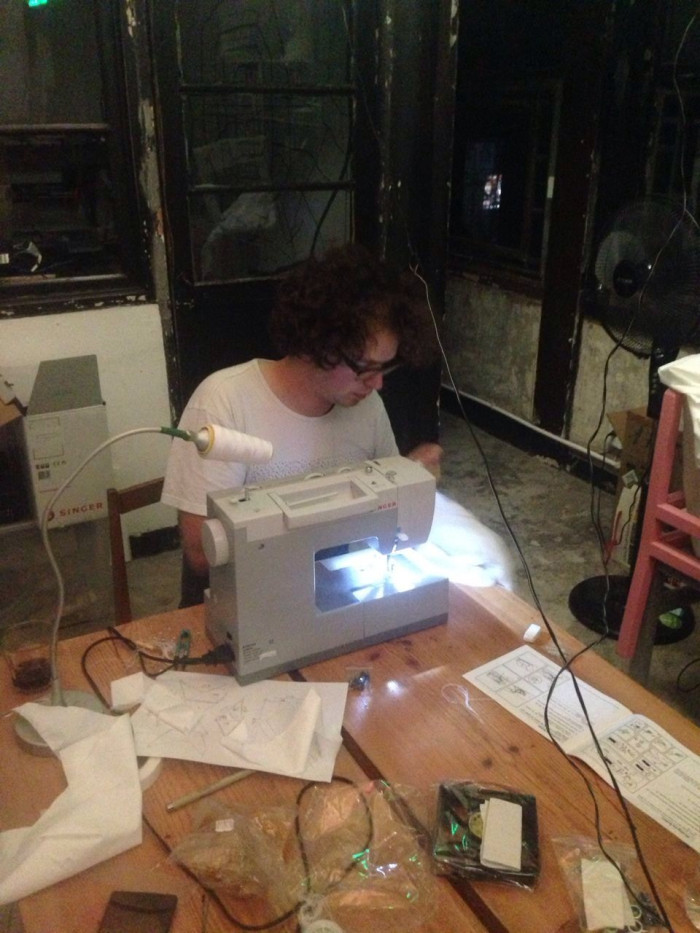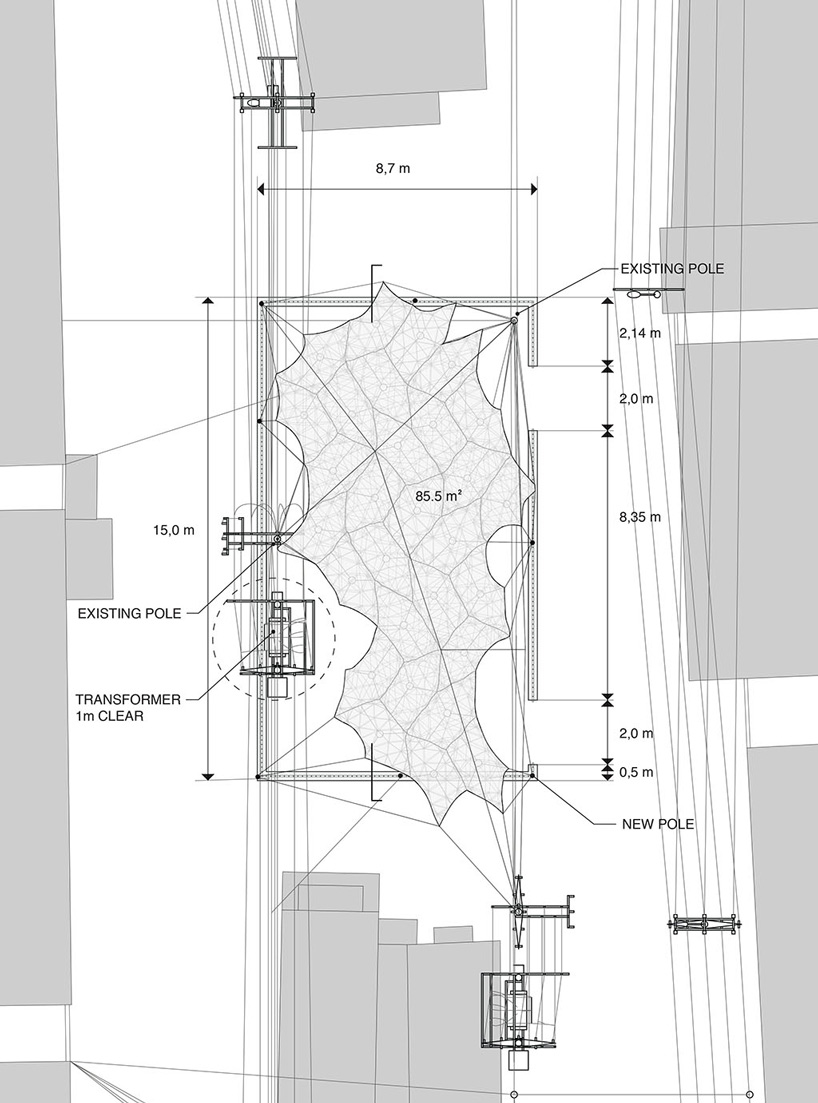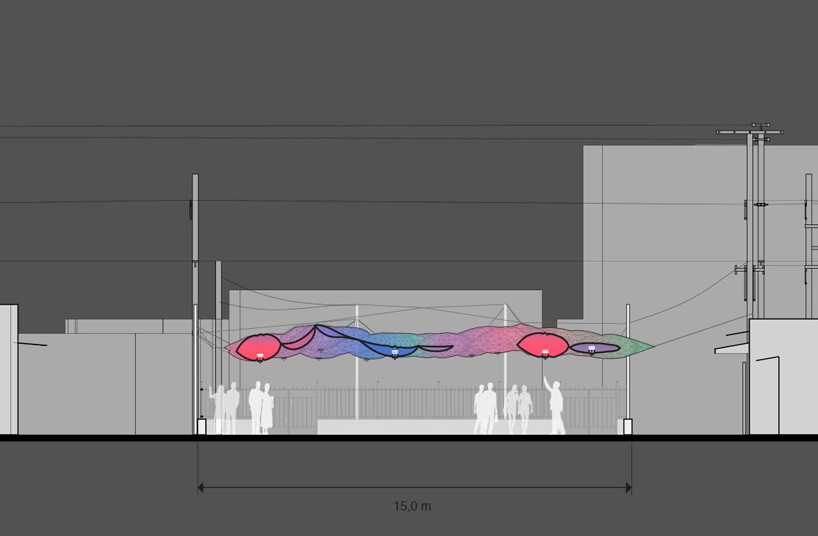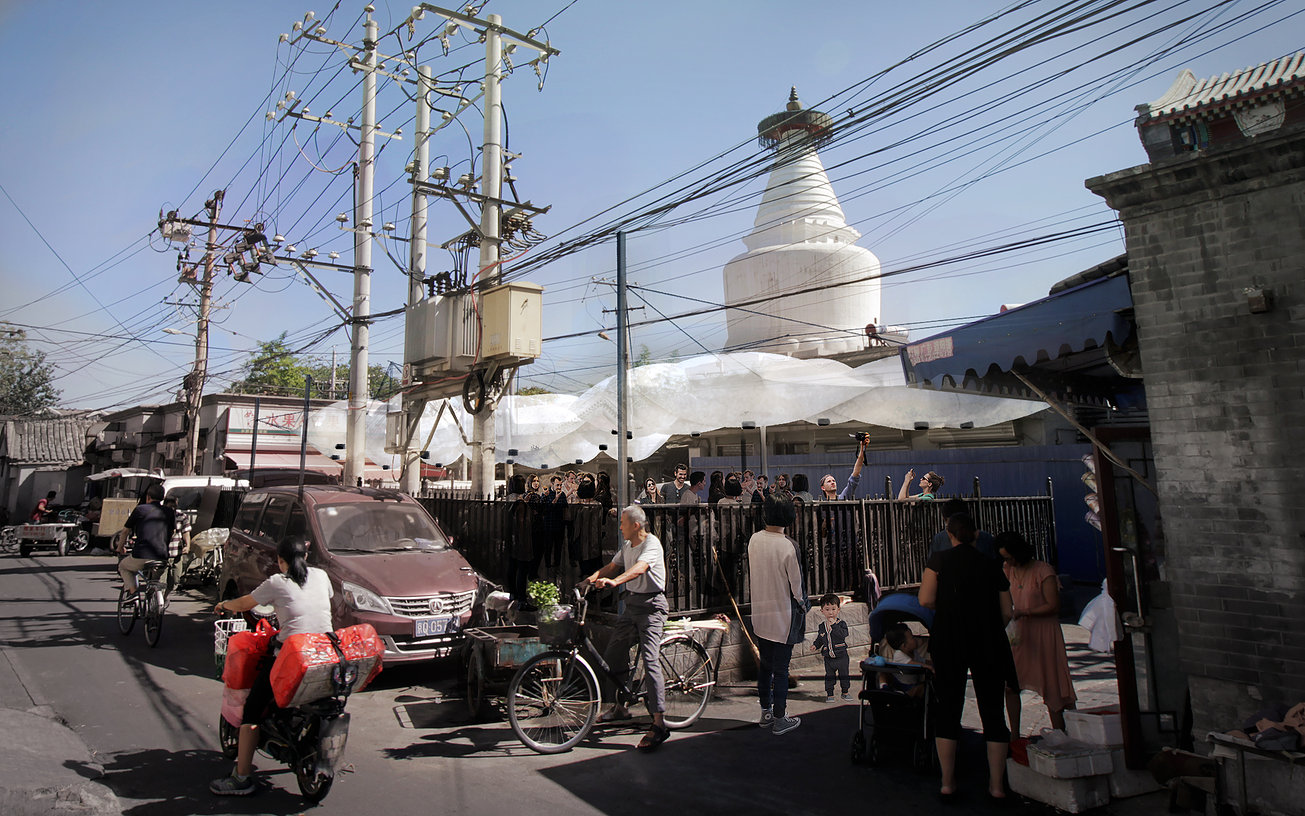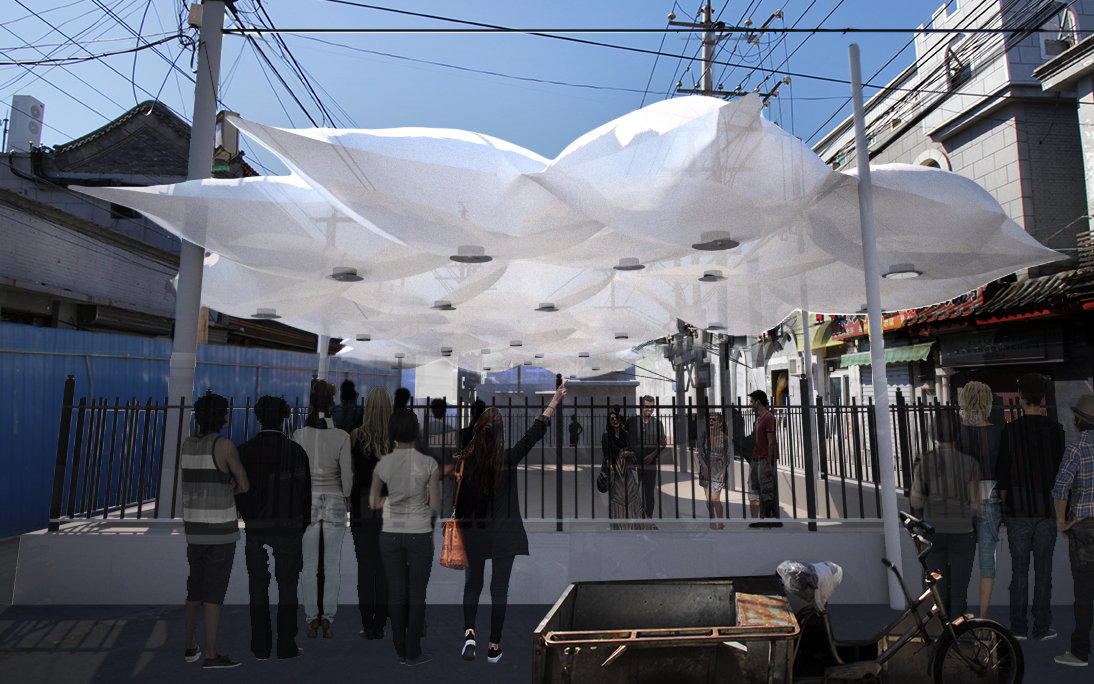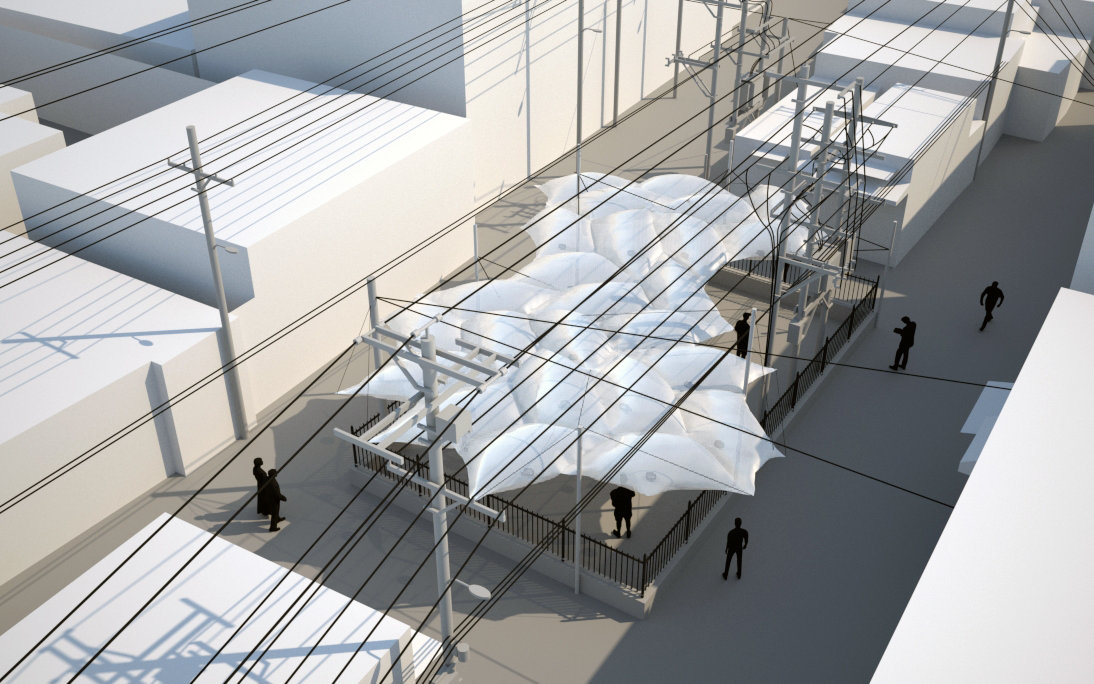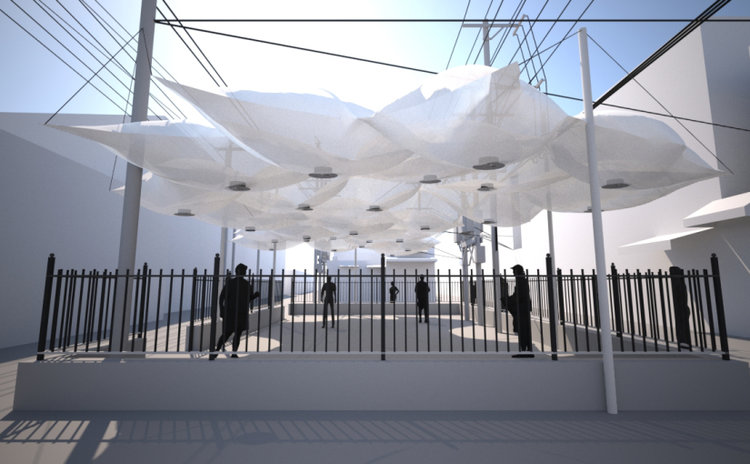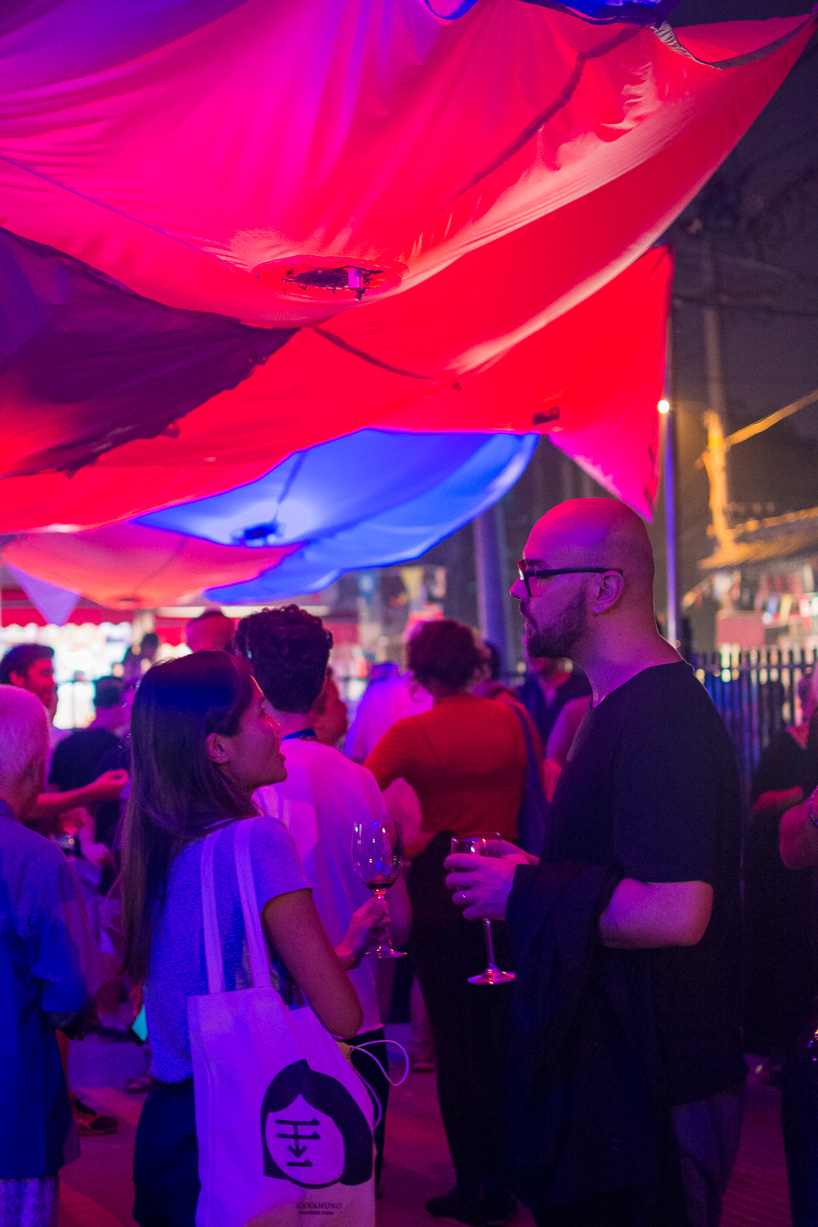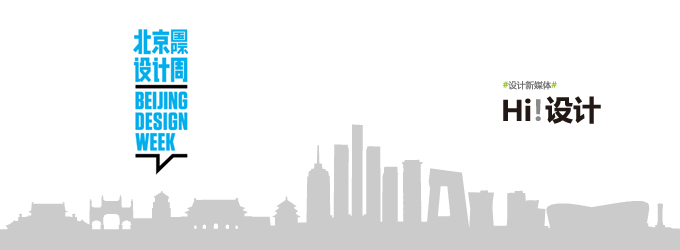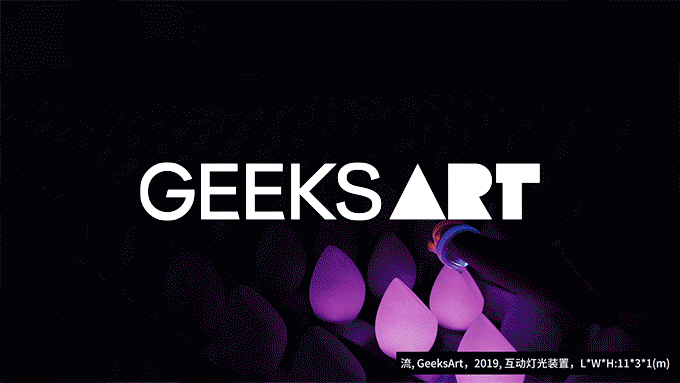这是一个非常有趣的项目,来自Tectonicus和Softcity。 在北京国际设计周白塔寺区域的展示中,设计师在宫门口菜市场对面的东西岔小广场上搭建了一个让当地居民与设计周参观者之间形成互动的一个作品。作品的名字叫“章鱼亭”,这个展亭由数组可以膨胀/缩小、为响应活动现场而发出彩色光的充气单元阵列构成,可以回应动作和声音,映射在现场开展的活动。
章鱼亭为白塔寺脚下的居民社区以及北京设计周的核心区域提供一座好客的互动充气室外公共空间。这座临时展亭探索的软城市概念具体表现在其遮篷系结构,它的启发来自章鱼的多动态、强适应力和高度自我表达的特征。
The Octopus Pavilion provides an inviting, interactive open-air public space at the heart of the Baitasi neighbourhood and at the centre of the Beijing Design Week activities. This pavilion explores the concept of Soft City as embodied in an architectural canopy system, and is inspired by the dynamic, adaptive, and highly expressive characteristics of the octopus.
章鱼,软体动物的近亲,直官上的软——它们没有骨头,可以穿过远比自身小很多的孔洞。然而这种“柔软”超越了它们自身的柔韧可能性,为模仿而集成的智能、行为和形态的自适应模式,。章鱼拥有与猫一样多的神经元,但 ⅔ 分布在其腕足中。神经元与感知器官和肌肉细胞直接集群,允许对吸盘关节、皮肤颜色和纹理的分布式高度控制。章鱼利用这种“智能皮肤”,进行各种类型的适应性行为,从伪装、模仿、误导到催眠-魔术师的计法。
Octopuses, a relative of the mollusks, are soft in a literal sense they have no bones and can squeeze through openings far smaller than their body. And yet this softness goes beyond their physical pliability, encompassing an adaptive paradigm that integrates intelligence, behaviour, and morphology. Octopuses have the same number of neurons as a cat, and yet ⅔ of these are situated in the legs. Neurons are clustered directly with sensing organs and muscle cells, allowing highly distributed control over sucker articulation, skin coloration and texturing. Octopuses take advantage of this intelligent skin employing it in a wide range of adaptive behaviours, from camouflage, mimicry, misdirection, to mesmerization – the stratagem of a magician.
设计示意图
试验阶段
试验
设计示意图
效果图
以章鱼作为拟态灵感,临时展亭突出了软系统和智能皮肤的特点。展亭将由数组可以膨胀缩小、对现场活动做出响应并变换色彩灯光的充气单元阵列构成。每个单元都有单独的传感器、微控制器、排风扇和 LED 灯,允许其作出独立的反应,与此同时,彼此链接的细胞单元因其轻盈的材料特性,又会协同在一起实现整体的动态效果。临时展亭感应着活动和声音的变化,对现场开展的活动作出反馈的同时也呈现出一幅动态地图。它就像是“白塔寺的心脏”,与邻近社区的“脉搏”动态同步。
Using the analogy of an octopus, the pavilion highlights the characteristics of soft systems and intelligent skin. The pavilion will be made of an array of pneumatic cells that can inflate and deflate as well as glow with coloured light in response to activity in the site. Each cell will have its own sensors, microcontroller, fan and LED, allowing it to react independently, and yet, though the supple nature of the connecting material, an overall dynamic effect will be achieved. The pavilion will respond to both movement and sound, reacting to and mapping the unfolding events in the site. In this way, the pavilion will become the heart of Baitasi measuring the pulse of the neighbourhood.





